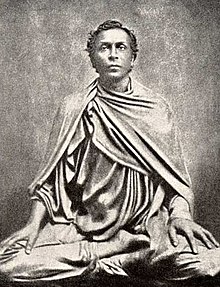Anagārika
This article includes a improve this article by introducing more precise citations. (February 2024) |
| People of the Pāli Canon | ||||||||||||||
|---|---|---|---|---|---|---|---|---|---|---|---|---|---|---|
|
||||||||||||||

In
Anagārikas usually wear white clothes or robes, depending on the tradition they follow. Some traditions have special ordination ceremonies for anagārikas, while others simply take the eight precepts with a special intention.
Given the lack of full ordination for women in most
History
In monastic settings, lay attendants for monks or nuns are needed. The monastic rules restrict monks and nuns from many tasks that might be needed, including the use of money, driving, cooking, digging and cutting plants, so lay attendants help bridge this gap. Anagārikas differ from laity by their commitment to Buddhism, to their precepts, and to monastics. There is usually a notable difference in their manner, appearance and attire. In many cases, they are full-time residents at the
The main difference between the Eight Precepts of an anagārika and the Ten Precepts of a novitiate is the rule of not handling money. Therefore, anagārika ordinations usually take place in
Notable Anagārikas
- Anagārika Dharmapāla
- Anagārika Govinda
- Anagārika Munindra
- Anagārika Prajñānanda
- Anagārika Dhammadinna
External links
- "Monastic: Training," Archived 2021-08-09 at the Wayback Machine from "BuddhaMind Info".
- "Anagarika Life" from Abhayagiri Monastery Newsletter Spring 2007.
- Anagarika Ordination Questions from DhammaWheel forum, 2014.
- A proper preparation for becoming an anagarika from DhammaWheel forum, 2011.
- Question about Anagarikas from DhammaWheel forum, 2014
- Anagarika is post-canonical invention from DhammaWheel forum, 2017.
